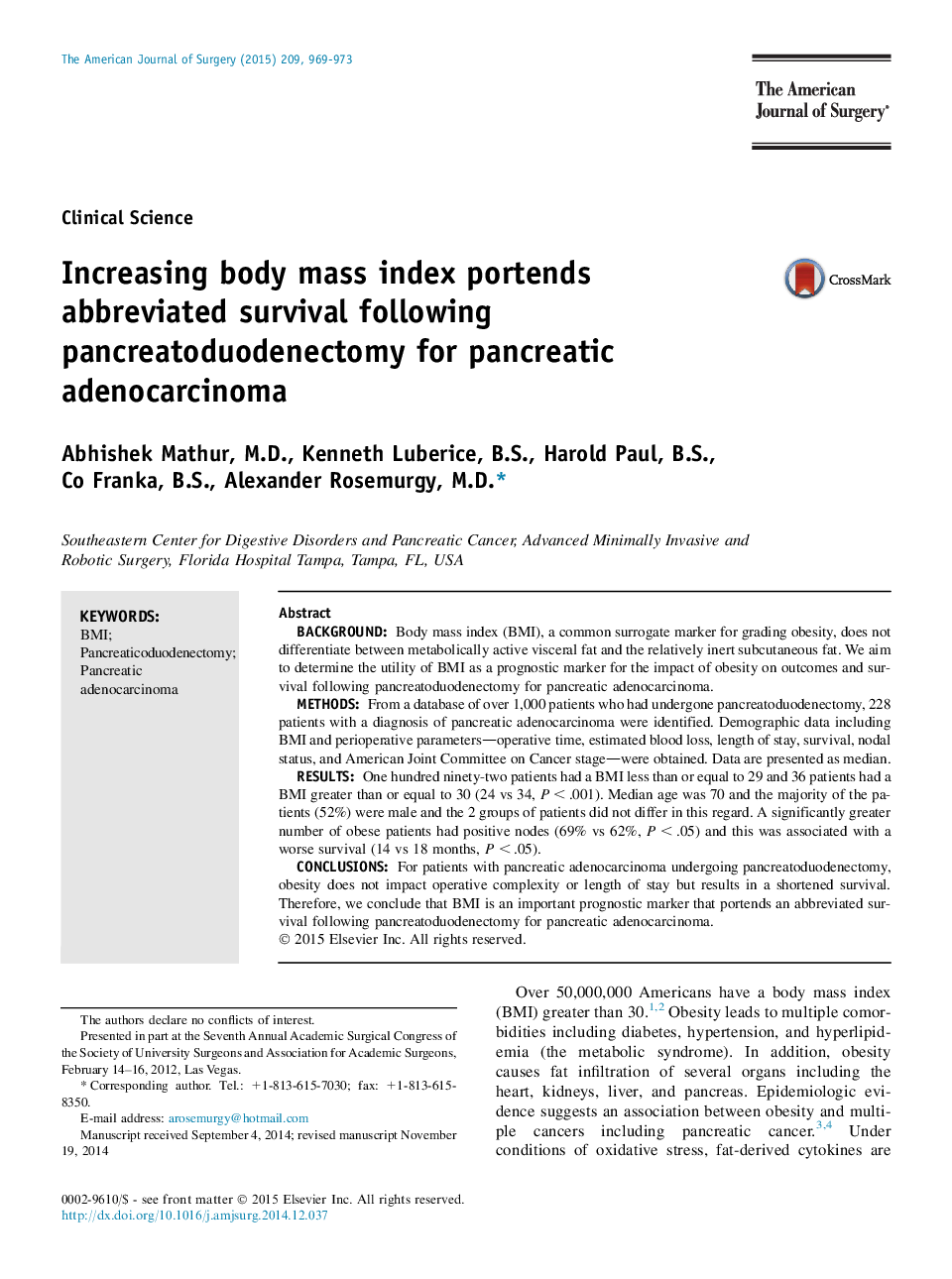| Article ID | Journal | Published Year | Pages | File Type |
|---|---|---|---|---|
| 6250717 | The American Journal of Surgery | 2015 | 5 Pages |
BackgroundBody mass index (BMI), a common surrogate marker for grading obesity, does not differentiate between metabolically active visceral fat and the relatively inert subcutaneous fat. We aim to determine the utility of BMI as a prognostic marker for the impact of obesity on outcomes and survival following pancreatoduodenectomy for pancreatic adenocarcinoma.MethodsFrom a database of over 1,000 patients who had undergone pancreatoduodenectomy, 228 patients with a diagnosis of pancreatic adenocarcinoma were identified. Demographic data including BMI and perioperative parameters-operative time, estimated blood loss, length of stay, survival, nodal status, and American Joint Committee on Cancer stage-were obtained. Data are presented as median.ResultsOne hundred ninety-two patients had a BMI less than or equal to 29 and 36 patients had a BMI greater than or equal to 30 (24 vs 34, P < .001). Median age was 70 and the majority of the patients (52%) were male and the 2 groups of patients did not differ in this regard. A significantly greater number of obese patients had positive nodes (69% vs 62%, P < .05) and this was associated with a worse survival (14 vs 18Â months, P < .05).ConclusionsFor patients with pancreatic adenocarcinoma undergoing pancreatoduodenectomy, obesity does not impact operative complexity or length of stay but results in a shortened survival. Therefore, we conclude that BMI is an important prognostic marker that portends an abbreviated survival following pancreatoduodenectomy for pancreatic adenocarcinoma.
